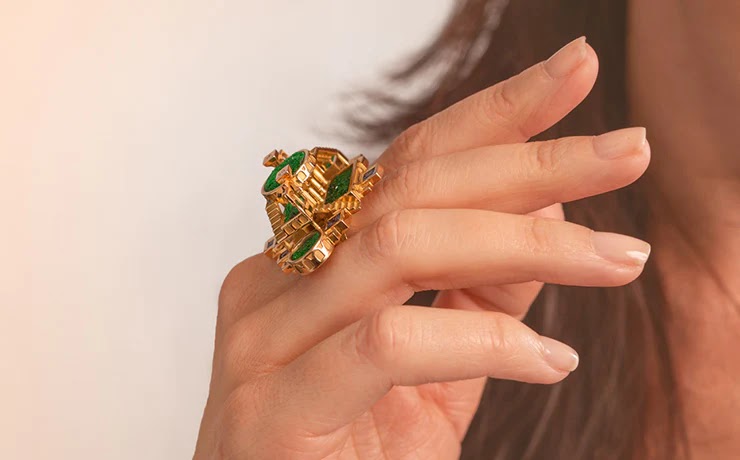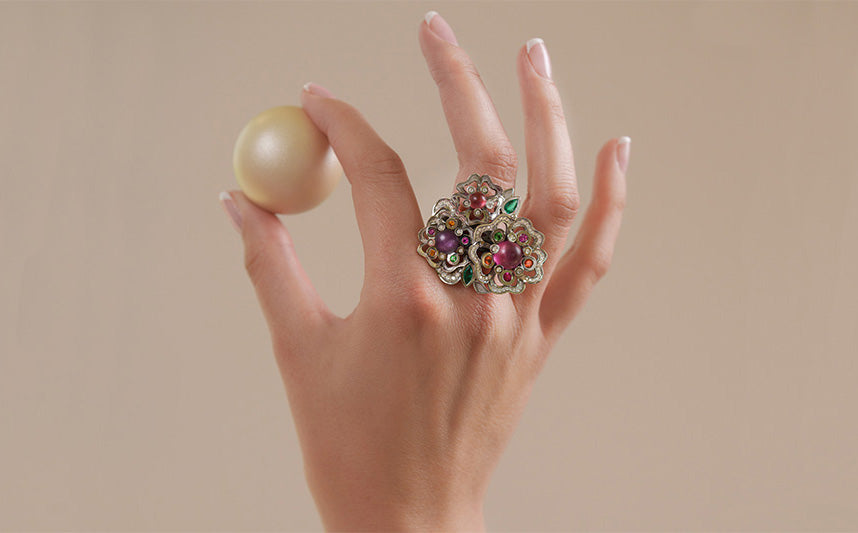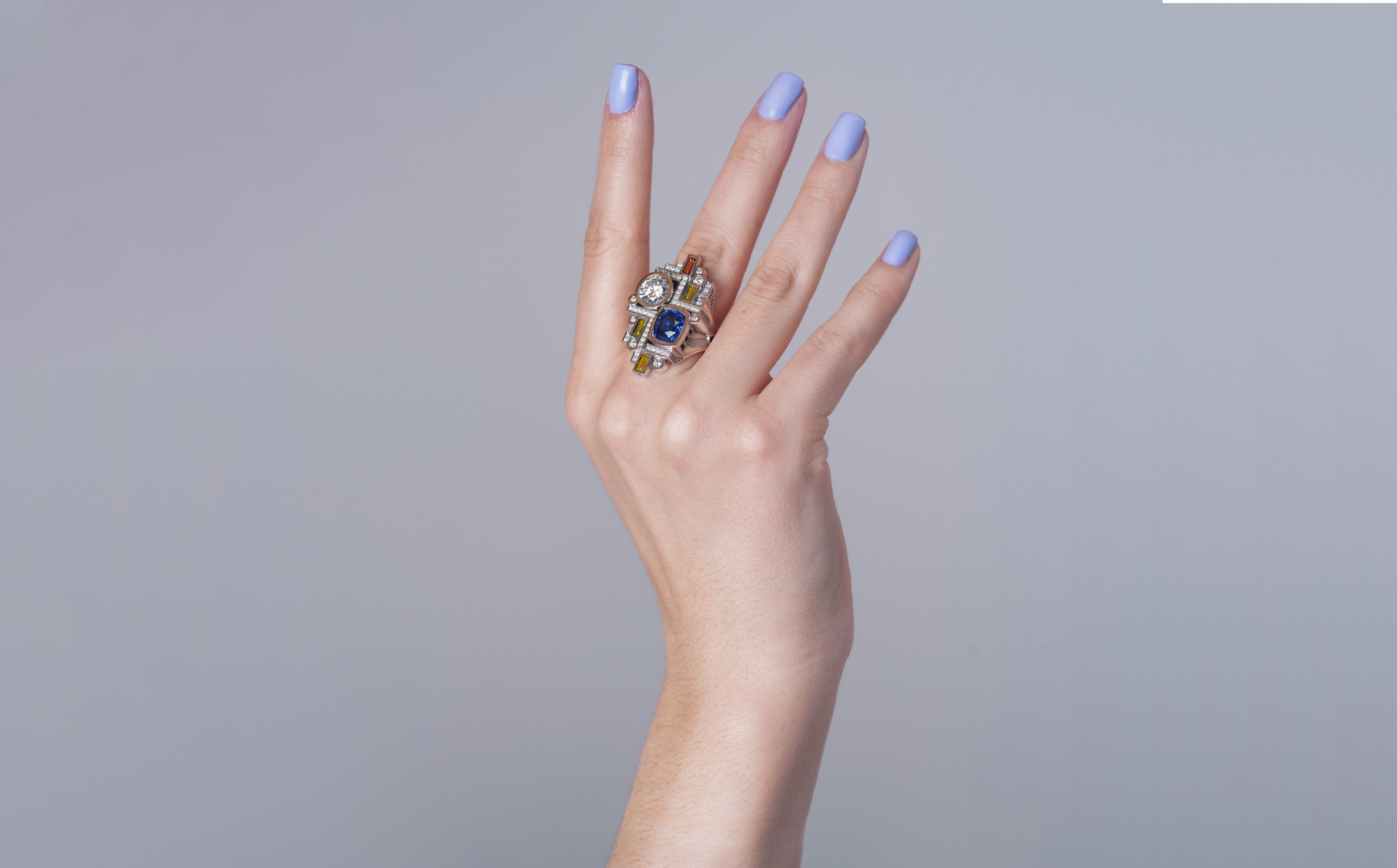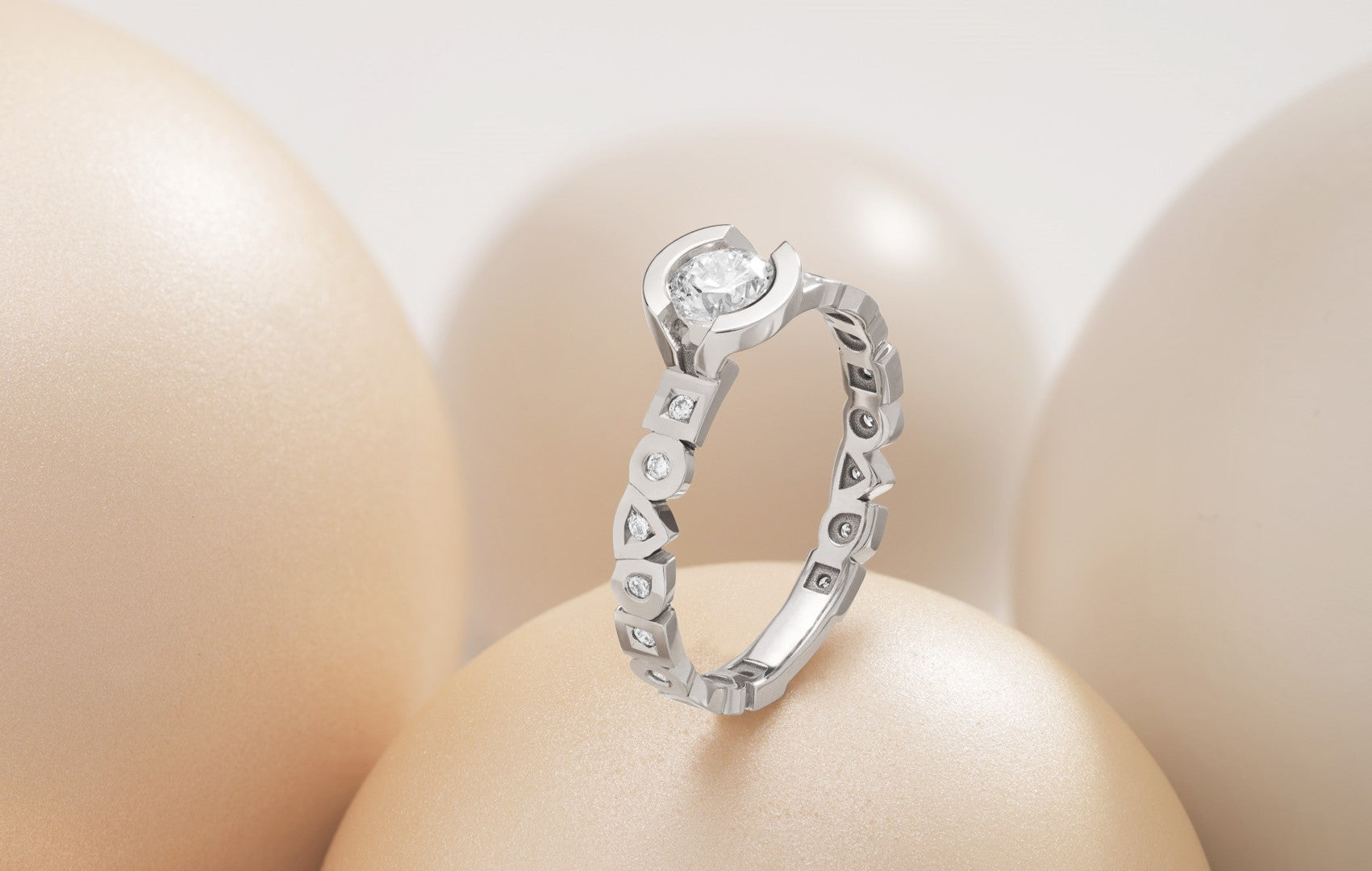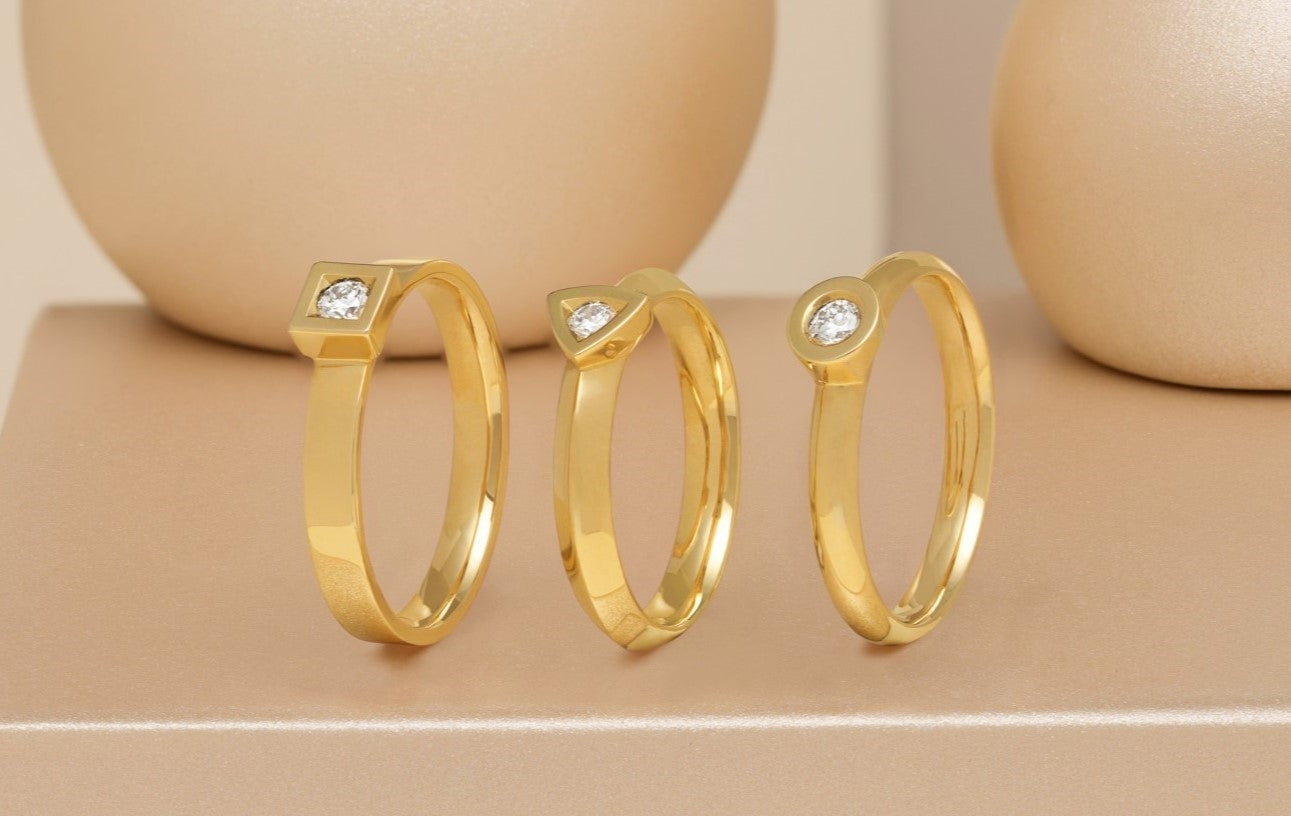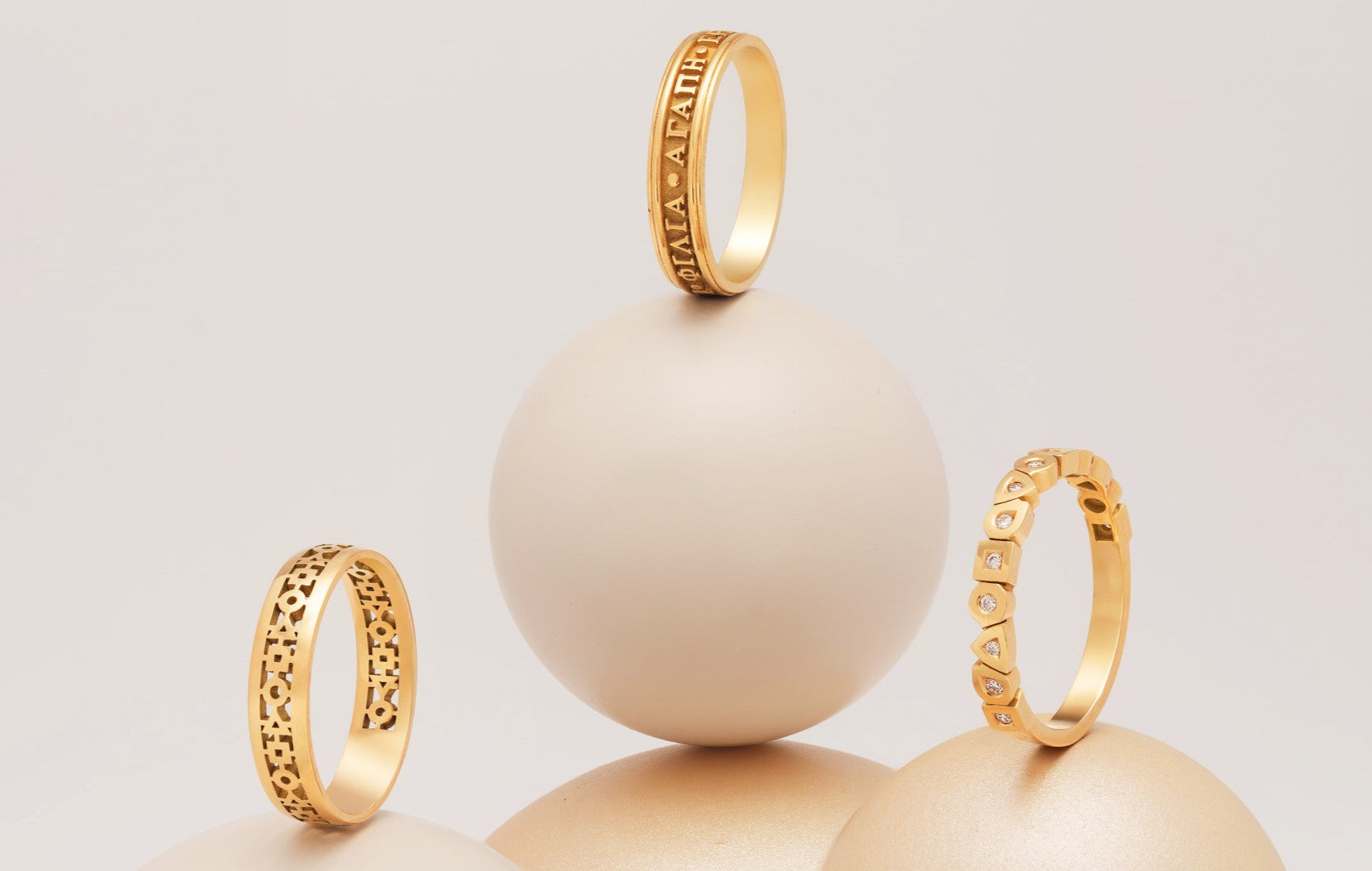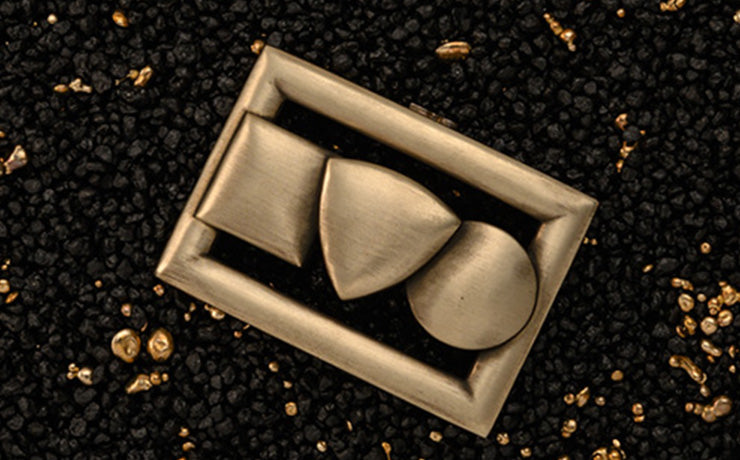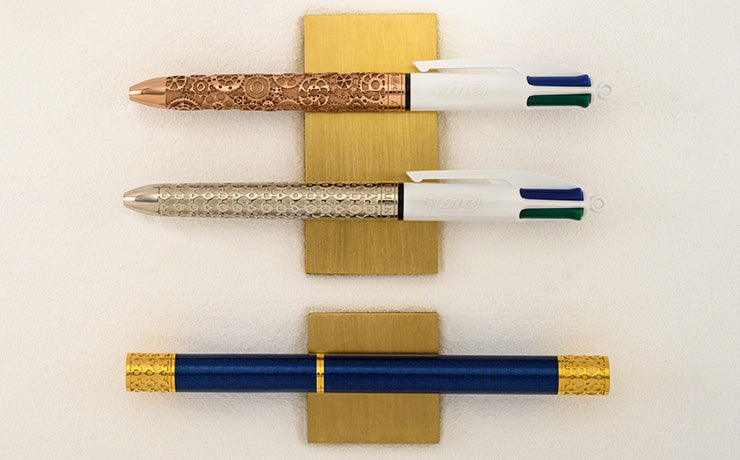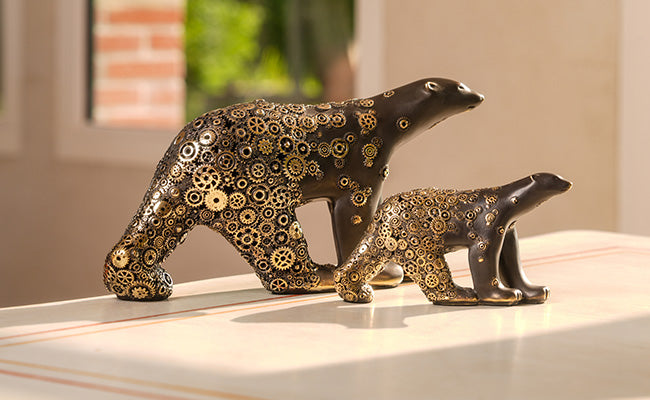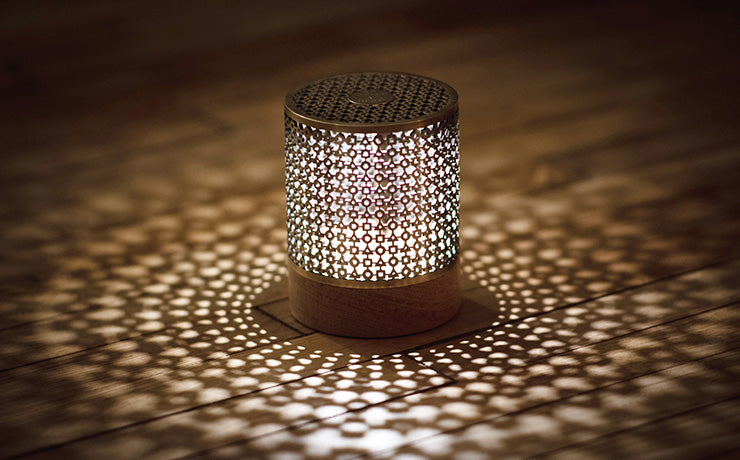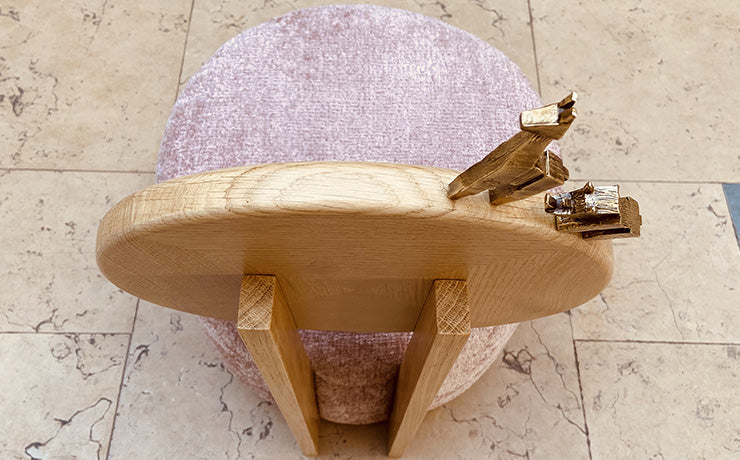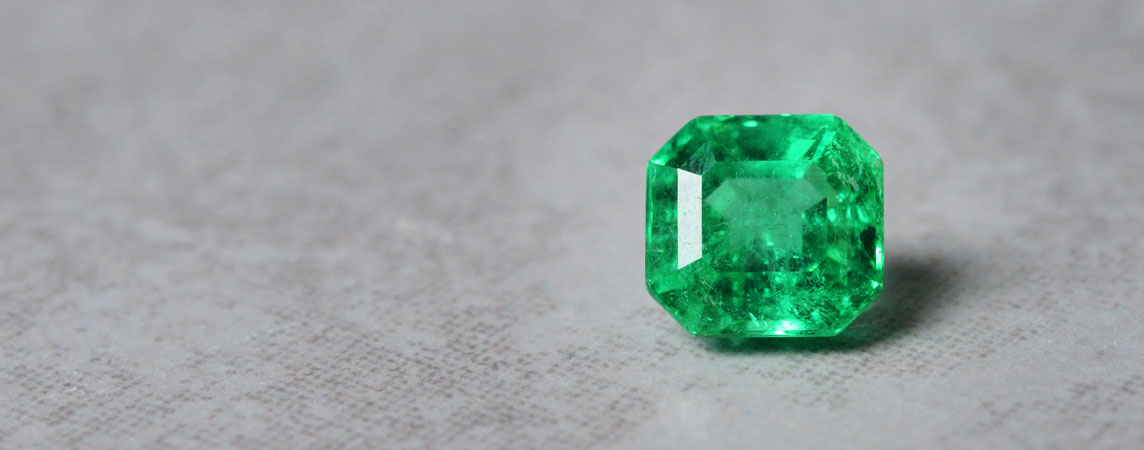
ÉMERAUDE
The emerald
For thousands of years, emeralds have been admired, coveted and even venerated by many civilizations. A legendary stone steeped in history, this green jewel is one of the world's most prized colored gems, alongside sapphire and ruby.
This stone is associated with the month of May for its distinctive green color, which is often compared to the most luminous of landscapes, the most beautiful of greens. There's no doubt that emerald is one of the greatest... Found in countless sovereign adornments and enjoying an unrivalled reputation, emerald is a must-have at Jewellery.
The artisan jeweler Philippe Tournaire likes to integrate this exceptional gem into harmonious creations in a variety of colors, or simply to create a water feature or a park in one of those dream villas that are Architecture rings.
Emerald identity card
L’émeraude est issue de la famille du béryl, au même titre que l’aigue-marine. C’est un silicate d’aluminium et de béryllium qui a une dureté comprise entre 7,5 et 8. Sa marque de fabrique est sa cristallisation : ses irrégularités viennent du processus de sa formation, suivant les mines et les continents de son origine. L’émeraude constitue l’une des rares gemmes à nous donner autant d’éléments de réponse quant à sa provenance exacte. Ses inclusions si caractéristiques et omniprésentes lui prodiguent un charme tout particulier, qu’on parle alors parfois de« jardin »pour l’identifier et définir son lieu de naissance. Rares sont les émeraudes sans inclusions visibles. . A l’état brut, l’émeraude apparaît en général sous forme de prisme hexagonal. La célèbre« taille émeraude »,de forme rectangulaire et aux angles facettés, suit d’ailleurs la forme de son cristal brut allongé. Lorsque l’émeraude contient un nombre trop important d’inclusions, il n’est pas rare de la voir taillée en cabochon. Bague Marélie en or jaune du créateur Philippe Tournaire.
Emerald processing and imitations
The vast majority of natural emeralds have micro-fractures and numerous inclusions, which can sometimes make the stone less transparent and therefore less attractive. To mitigate these effects, emeralds are often impregnated with a colorless oil or resin. Most emeralds are embellished in this way.
It's a gem that needs to be cleaned with care. As emeralds are particularly well known, many laboratories have sought to imitate them, using materials such as glass or, for example, assembling two synthetic spinels or two colorless beryls on either side of a layer of green glue,
giving the illusion of a single stone (these assemblies are commonly called doublets, triplets). Synthetic emeralds involve reproducing the stone from low-quality crystals, purifying and recrystallizing them.
This can be achieved by artificially recreating the formation conditions of a natural emerald. Imitations are usually detectable simply because the stone appears too perfect, with no visible inclusions, or because it contains inclusions not found in natural stones, such as gas bubbles. Synthesis requires greater experience.
Color, the emerald's greatest asset
Color is the determining factor in an emerald's overall value. A beryl is considered an emerald when its color ranges from yellow-green to blue-tinted green, with a rather pronounced tone and bright intensity. This prized color is due to the presence of chemical elements such as chromium, vanadium and iron. The more iron, the more blue. Of all the known green gemstones, emerald is king, as it is unrivalled in terms of color and history, although other gems are also highly prized for their different greens.
By way of comparison, we find peridot and tsavorite: just as emerald may be referred to as "garden" green , peridot is associated with the green of a meadow,
d’un citron vert ou encore d’une olive car cette pierre est à dominante verte mais très souvent teintée d’un jaune plus ou moins prononcé. Cette pierre lumineuse a été baptisée « gemme du soleil » par les Egyptiens. Une autre pierre appelée tsavorite, est un grenat vert particulièrement pétillant légèrement teinté de jaune ou de bleu, qui se rapproche plus de l’émeraude que du péridot. Découverte récemment, la tsavorite constitue le plus connu des grenats verts. En grande partie, le péridot et la tsavorite doivent respectivement leur couleur au fer et au vanadium…Deux éléments que l’on retrouve aussi dans l’émeraude, avec le chrome ! Ces trois gemmes d’un vert intense apportent chacune leur contribution à la création de bijoux Tournaireexceptionnels, aux couleurs pleines de vie.
The emerald's origins
Through its clarity and color, emerald tells us its story. By letting ourselves be guided through the garden of its secrets, this sublime gem reveals its origins... Historians estimate that the first emeralds appeared in Egypt in 3500 BC. Egypt was the major source of emeralds until the 16th century. Then Spanish explorers discovered abundant mines in South America...where we find the world's largest source of quality emeralds: Colombia. Today, the majority of emeralds come from deposits in Colombia (Muzo, Coscuez, Chivor...), Brazil, Zambia and Zimbabwe. Minor sources include Afghanistan, Pakistan, Australia, the USA and Russia.
Unlike many gems, an emerald's provenance is easy to determine.
It is for this reason that these terms are commonly used:
- L’émeraude « colombienne » : elle décrit l’émeraude la plus recherchée, d’une couleur vert-bleu à vert, d’une grande intensité. C’est à partir des émeraudes de Colombie que sont jugées les autres. Une des inclusions typiques des émeraudes de Chivor en Colombie est le pyrite de fer.
- La « brésilienne » : se dit d’une émeraude plus claire que les autres, avec des inclusions de mica et autres minéraux.
- La « zambienne » : un peu plus foncée et bleue que la « colombienne », généralement avec moins d’inclusions
- L’émeraude de Sandawana : d’un vert intense, très lumineuse
- Les émeraudes afghanes: elles laissent souvent apparaître des nuages de flocons noirs et des cristaux blancs.
In addition to these inclusions revealing their provenance, a reliable, in-depth scientific study has established a veritable identity card for each of the main emerald mines. Researchers have succeeded in defining the emeralds' origins by analyzing their surface, without altering them. This discovery has made it possible to retrace the history of these mythical stones.
Rich in history, fractures and color, emerald is a timeless gem in its own right that has never ceased to seduce the world. Artisan designer Philippe Tournaire loves gemstones sparkling with beauty, full of hidden treasures just waiting to be revealed in an original creation. At once singular because of its peculiarities and common because it's known to all, emerald has managed to set itself apart from the other green stones that nature offers us to contemplate.
A veritable garden in its own right, it deserves to be visited and revisited!
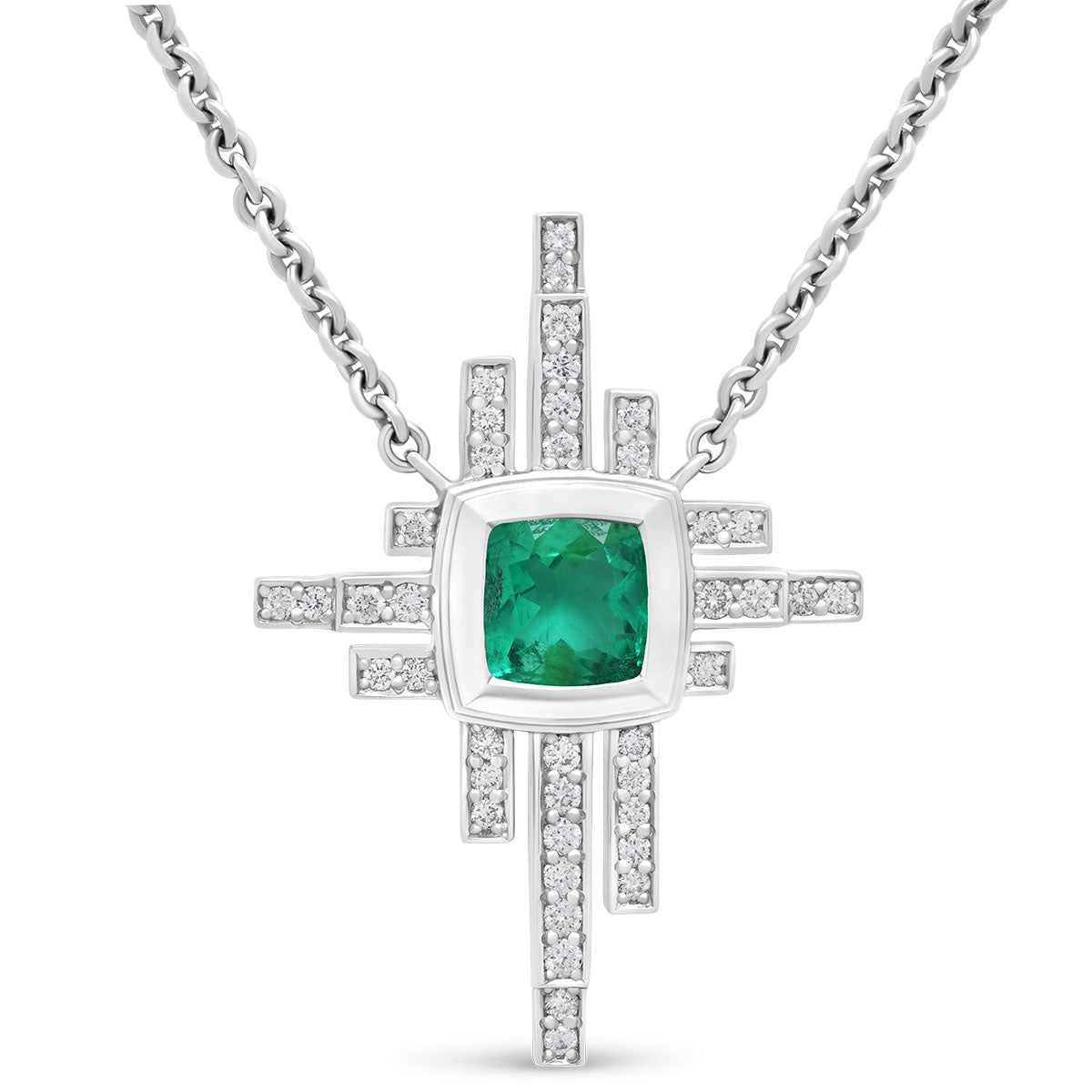
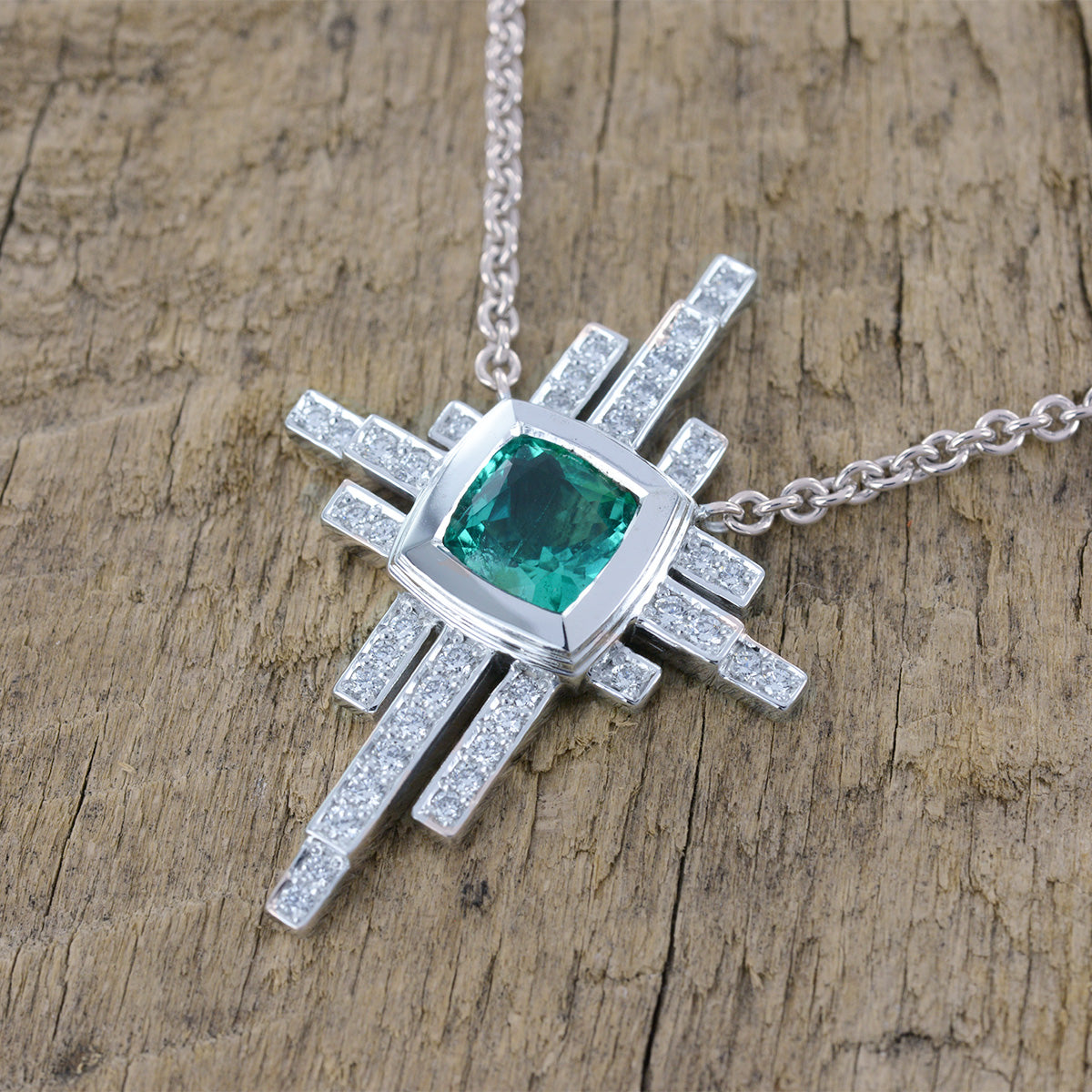
The guarantee of uncompromising craftsmanship
Our titles and labels





Made in France
Made in our workshop

100% secure payment
3x free of charge possible

Free delivery & returns
100% secure and free

Jewellery committed
Ethical and responsible jewelry

